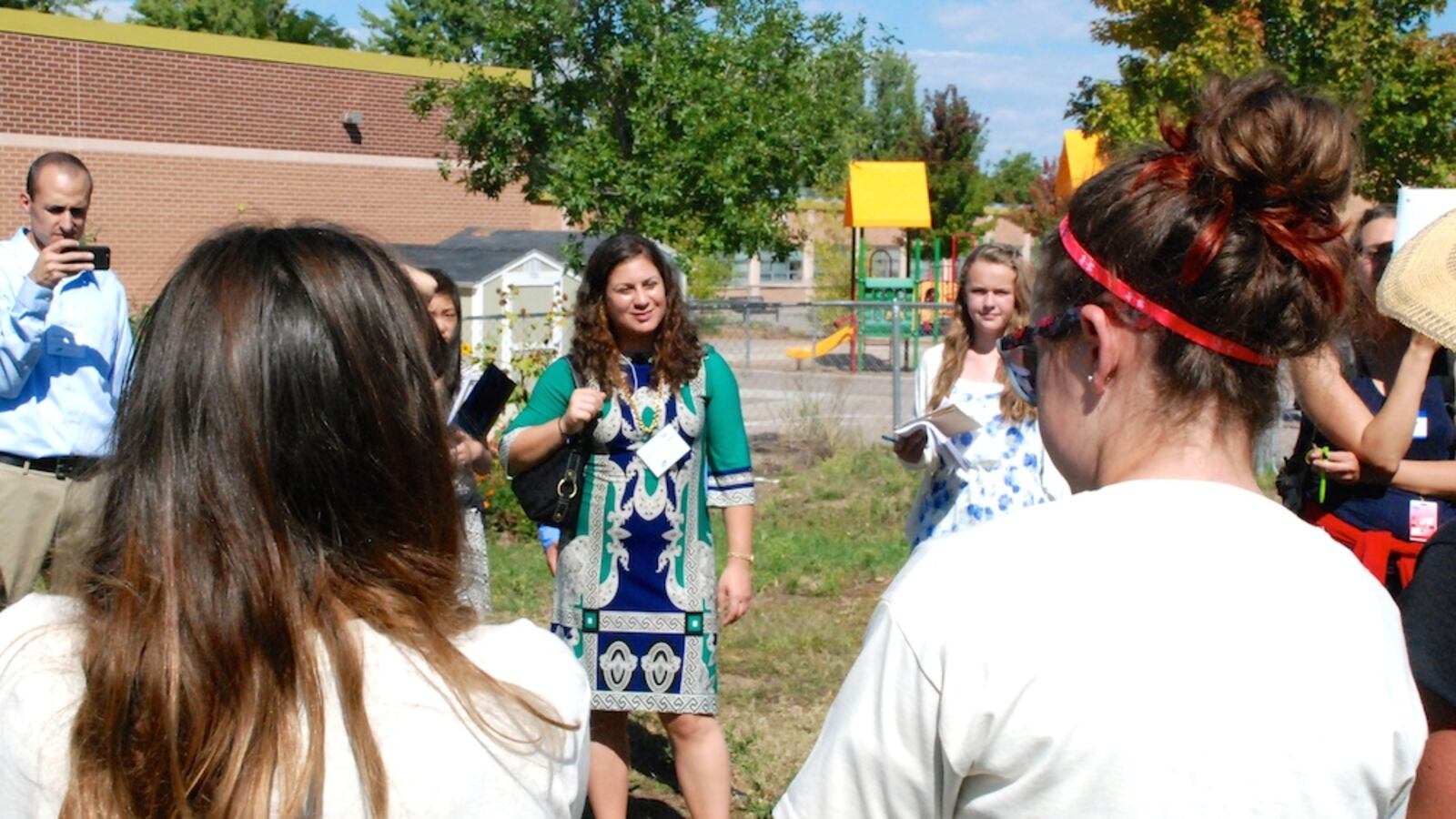Five years ago, Sebastian Dibildox and his family threw scraps of wasted food away and left lights on carelessly around the house. He and his friends took separate cars to school.
Today, his family has a compost pile and prefers to use natural light. He also carpools with friend (since third grade) Steven.
“In third grade, we did some math projects around carpooling,” Dibilodx said, shortly after describing how worms turn his family’s waste into soil to U.S. Department of Education officials. “And we learned that using just one gallon of gasoline puts 20 pounds of CO-2 into the air.”
Dibildox was one of seven students who shared what he’s learned about environmental sustainability — and other more traditional school subjects — while attending the Denver Green School with representatives from the U.S. Department of Education, the state education department, and the media Tuesday.
The officials stopped by the southeast school as part of the Green Ribbon Schools tour.
The Green Ribbon Schools initiative, run by the federal education department, seeks to showcase schools that are environmentally conscious, academically high achieving, and embracing the social and emotional wellbeing of students.
The Green School was one of about a half-dozen stops in Colorado for the Washington officials, who kicked off their visit earlier Tuesday with a panel in downtown Denver. They were expected to stop by schools in Douglas County, Boulder and Fort Collins.
Students and officials at the Green School highlighted their garden, urban farm, and expeditionary learning, in which students research a topic both in the classroom and in practice. For example, fourth grade students recently jaunted to a grocery store to spend $5 on the food of their choice. They’re working on presentations now about why they chose certain foods.
“Students do better when they’re excited about relevant learning,” said Kartal Jaquette, the school’s sustainability coordinator.
Teachers and students who have embraced the school’s project-based model of “education for sustainability,” Jaquette said, are seeing better results on the state’s standardized tests, which are tied to both school accountability and teacher effectiveness policies.
With rare exception, the Green School either meets or beats both Denver Public Schools’ and the state’s average score in reading, writing, and math.
But one of the kindergarten through eighth grade school’s leaders, Frank Coyne, acknowledged there are some limits to the school’s emphasis on projects and expeditionary learning. The school’s math scores, especially at the middle school, have become stagnant. And administrators are considering a more basic approach to math.
Coyne said school administrators and teachers constantly wrestle with the desire to teach to the school’s model and the high stakes of accountability that accompany tests scores.
But Coyne said, “it’s more than just test scores. It’s more than just a farm and a garden. It’s about how do we teach the whole child.”
Dibildox’s mother, Aylane, who was on hand to watch him read his essay for officials, said the Green School has made her fifth grader a better student and citizen.
“The school has made him conscious of his actions and decisions,” she said. “Students his age can be very self-centered. But he’s learning a global perspective. His actions and thoughts impact the whole world. He’s inspired us — as a family — to make changes.”

